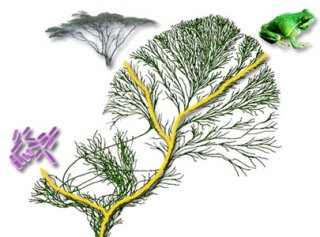What is life? From a scientific point of view, living things share certain qualities.

What is life from a metaphysical or spiritual point of view?
Life is perceived as a quality that permeates all things.
From our perspective in a physical body, we experience life as a series of events to which we react, respond, and give meaning.
Do not forget, the physical Universe is being projected by the collective subconscious human mind. The purpose of this projection is to answer the question, "What if it were possible to be separate?"
The answer, of course, is that being separate, from source, each other, our bodies, the earth, is neither physically nor metaphysically possible. Therefore, the only way to answer this question, to have this experience, is to create an illusion of separation.
Life is what we really are. What we call our lives, from birth to death in these physical bodies, is actually the experience of one point of view in the illusion of separation, during which we come to know (or go through) that which we are not. It is this contrast of knowing what we are not that causes us to remember who we are.
Gaining this perspective is like climbing a mountain and looking back on the valley where you started your hike. Or you can think of it as creating a mirror, so you can see a reflection of yourself. The image in the mirror is not you, but you gain some information from the reflection.
This is the purpose of "life" in the physical dimension. Life is not a body, or a set of qualities shared by what we perceive as the plant and animal kingdoms. Life is what we are. It is a force that shapes and experiences the world we all live in.
What is life? To answer that question check out the books and video below.
OR, Go Back To: METAPHYSICAL SCIENCE to learn more about the non-physical aspects of reality.
The Biology of Belief is a groundbreaking work in the field of New Biology. Author Dr. Bruce Lipton is a former medical school professor and research scientist. His experiments, and that of other leading edge scientists, have examined in great detail the processes by which cells receive information. The implications of this research radically change our understanding of what life is.
The God Code: The Secret of Our Past, the Promise of Our Future by Gregg Braden
What would it mean to discover an ancient language—a literal message—hidden within the DNA of life itself? What we once believed of our past is about to change. . . . A coded message has been found within the molecules of life, deep within the DNA in each cell of our bodies. Through a remarkable discovery linking Biblical alphabets to our genetic code, the “language of life” may now be read as the ancient letters of a timeless message. Regardless of race, religion, heritage, or lifestyle, the message is the same in each cell of every woman, child, and man, past and present.
Nobel laureate Erwin Schrödinger's What is Life? is one of the great science classics of the twentieth century. A distinguished physicist's exploration of the question which lies at the heart of biology, it was written for the layman, but proved one of the spurs to the birth of molecular biology and the subsequent discovery of the structure of DNA. The philosopher Karl Popper hailed it as a 'beautiful and important book' by 'a great man to whom I owe a personal debt for many exciting discussions'. It appears here together with Mind and Matter, his essay investigating a relationship which has eluded and puzzled philosophers since the earliest times. Schrodinger asks what place consciousness occupies in the evolution of life, and what part the state of development of the human mind plays in moral questions. Brought together with these two classics are Schrödinger's autobiographical sketches, published and translated here for the first time. They offer a fascinating fragmentary account of his life as a background to his scientific writings, making this volume a valuable additon to the shelves of scientist and layman alike.
What Is Life? By Lynn Margulis, Dorion Sagan, Niles Eldredge
The authors move deftly across a dazzling array of topics--from the dynamics of the bacterial realm, to the connection between sex and death, to theories of spirit and matter. They delve into the origins of life, offering the startling suggestion that life--not just human life--is free to act and has played an unexpectedly large part in its own evolution. Transcending the various formal concepts of life, this captivating book offers a unique overview of life's history, essences, and future.

Rupert Sheldrake, one of the world’s most innovative biologists and writers is best known for his theory of morphic fields and morphic resonance, which leads to a vision of a living, developing universe with its own inherent memory.
What Is Life? Visit Rupert Sheldrake: Biologist and Author - A New Science of Life.
Go Back To: METAPHYSICAL SCIENCE
or, Go Back To: METAPHYSICS FOR LIFE: TAKE THE OFF RAMP to return to the "HOME" page and continue exploring this site.
Recent Articles
-
Living In The Chrysalis - 14 "Days" of Total Transformation
Aug 25, 20 10:26 PM
Living In The Chrysalis is about the 14 "Days" of Total Transformation that collective Human Consciousness is experiencing in 2020 and beyond. -
The Zero Point Perspective
Jul 20, 20 01:04 PM
Reality is made up of infinite zero points radiating energy and information into the space-time of the mind. -
Metaphysics For Life - Take the Off-Ramp, Remember Who You Really Are
Jan 03, 20 01:15 PM
Metaphysics for Life is for practical people looking for a way to apply the science, philosophy, and spiritual aspects of metaphysics to their real, everyday lives.








Comments
Have something to say about what you just read? Leave me a comment in the box below.